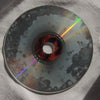
Disc Rot: A Potential Problem for Video Game Collectors
, by Av Kandola, 4 min reading time
Need to get in touch with us? Email us at: sales@gamesconnection.co.uk

, by Av Kandola, 4 min reading time
Not to be an alarmist or anything but I feel a sense of responsibility to write about an issue that has the potential to affect the gaming and collecting community at large: Disc Rot. YES, it actually exists and can affect open and often played games as well as sealed in the box “mint” collectible games by potentially rendering them completely unplayable.I can hear some of you asking, “What is disc rot?” Actually, let me first point out what disc rot is NOT - it’s not an indication of bad treatment, although we all know poor handling can render our games just as non-functional but that’s for a different article.
Not to be an alarmist or anything but I feel a sense of responsibility to write about an issue that has the potential to affect the gaming and collecting community at large: Disc Rot. YES, it actually exists and can affect open and often played games as well as sealed in the box “mint” collectible games by potentially rendering them completely unplayable.I can hear some of you asking, “What is disc rot?” Actually, let me first point out what disc rot is NOT - it’s not an indication of bad treatment, although we all know poor handling can render our games just as non-functional but that’s for a different article.
Unless there is a tiny scratch on the label side of the disc that ends up appearing similar to disc rot, the problems are separate and unrelated. We’ve all heard about and experienced what scratches on the label side of a disc can do but disc rot is an unrelated problem that has the same result – potentially unplayable games. Disc rot, is a direct result of bad disc pressing during the manufacturing process. Microscopic air bubbles or other contaminants can get trapped in with the delicate information layer between the outer polymer layers or sometimes the pressing may be slightly uneven. With time, the information layer becomes oxidized in these tiny pockets and physically rusts or “rots” those pieces of the information layer. Regardless of how disc rot occurs, the best way to check for disc rot damage is to hold the disc up to a bright light and look around the surface for tiny dots of white light – some may be so tiny as to be nearly imperceptible.
A disc rot hole goes straight through the disc, from top through to the bottom leaving nothing in the information layer to block or reflect the light in that location which may or may not make the disc unreadable – this will depend on several factors including where on the disc the damage is (most games don’t use the entire disc for information) and the reading hardware itself. Unlike a label-side scratch which also removes the information layer and leaves a clear view through the disc, a disk rot hole doesn’t affect the surface of the disk – there is no outside damage. Just one tiny disc rot “dot” is a potential problem even if the disc is still readable - it represents damage that cannot be repaired by any of the usual “scratch removal” methods as it’s below the surface and the damage is only likely to get worse with time until one day the disc becomes unreadable. Many people online claim that disc rot doesn’t really happen or only covers a few years’ worth of discs from certain manufacturers or that it only concerns CD-R’s.
The fact is, many collectors have experienced the problem first hand and found that after checking through their collections they had discs from various systems across many years that showed disc rot damage, even expensive games considered “mint” showed signs of damage. Many of these were found to occasionally lock up or had become totally unplayable. Even some games that were factory sealed were found to exhibit this problem. Physical degradation of collectibles is a concern for anyone who collects just about anything – paintings, cars, toys, etc… but in many of those collectibles, physical degradation can be slowed, stopped, or repaired but in the case of video game collecting, there really is nothing you can do to prevent or repair disc rot damage. Someone who collects paintings may still buy a rare painting that has oxidation damage to it but they are certainly NOT going to pay top-dollar for it – it’s damaged after all.
If they are uniformed about the potential types of damage their favorite collectible may experience, than they are going to be “taken to the cleaners” That is why it’s important for video game collectors to be made aware of the issue – so they realize that disc rot is real, is irreparable, and has the potential to render a game useless. That way, they know what to look for when checking out collectible game discs to purchase and can make an informed decision whether to buy or not – you already know that buying a physically scratched disc carries a risk that the game doesn’t work or will become unplayable with time and now you know the same about disc rot.
Anyone with a collection of video games on disc is urged to make backups of their games if possible in case the day comes when a cherished original game disc succumbs to disc rot and becomes unplayable.